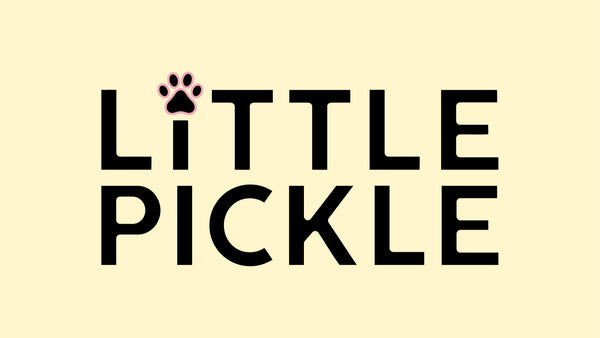
Front vs Back Hooking on Dog Harness: The Ultimate Guide
Share
As a dog owner, choosing the right harness and leash attachment point is crucial for your furry friend's comfort, safety, and training. In this comprehensive guide, we'll explore the differences between front and back leash attachments, helping you make an informed decision for your canine companion.
Understanding Leash Attachment Points
Before diving into the specifics, let's clarify what we mean by front and back leash attachments:
- Front Attachment: Located on the chest area of the harness
- Back Attachment: Positioned on the dog's back, typically between the shoulder blades
Each attachment point offers unique benefits and may be better suited for different dogs and situations.
The Benefits of Front-Clip Harnesses
Front-clip harnesses have gained popularity in recent years, especially for dogs that tend to pull on the leash. Here's why many trainers and pet owners swear by them:
1. Reduced Pulling
The primary advantage of a front-clip harness is its ability to discourage pulling. When a dog pulls, the leash attachment on the chest causes them to turn towards you, making it harder for them to gain momentum.
2. Better Control
For larger or stronger dogs, a front attachment gives the owner more control. It allows you to guide your dog's direction more easily, which can be particularly helpful in crowded areas or when encountering distractions.
3. Training Aid
Front-clip harnesses are excellent tools for leash training. They naturally encourage loose-leash walking without the need for constant corrections.
4. Gentle on the Neck
Unlike traditional collars, front-clip harnesses distribute pressure across the chest, reducing strain on the neck and throat. This makes them a good choice for dogs with respiratory issues or those prone to tracheal collapse.
The Advantages of Back-Clip Harnesses
While front-clip harnesses have their merits, back-clip options remain popular for good reasons:
1. Comfort for Most Dogs
Many dogs find back-clip harnesses more comfortable, especially if they're not prone to pulling. The leash stays out of their way, allowing for more natural movement.
2. Tangle-Free Walks
With the leash attached to the back, there's less chance of it getting tangled under your dog's legs or feet, making for smoother walks.
3. Ideal for Small Dogs
Back-clip harnesses are often preferred for small breeds or dogs with short legs, as front-clip options might interfere with their gait.
4. Versatility
Many back-clip harnesses are suitable for a variety of activities, from casual walks to more active pursuits like hiking or running.
Choosing the Right Attachment for Your Dog
Selecting between front and back leash attachments depends on several factors:
Dog's Size and Strength
- Large, strong dogs that pull: Front attachment
- Small or well-behaved dogs: Back attachment
Walking Behavior
- Persistent pullers: Front attachment
- Calm walkers: Back attachment
Training Goals
- Teaching loose-leash walking: Front attachment
- Maintaining good walking habits: Back attachment
Physical Considerations
- Dogs with neck issues: Front attachment
- Dogs with respiratory problems: Front attachment (ensure it doesn't restrict chest movement)
Activity Level
- High-energy activities: Back attachment (allows for more freedom of movement)
- Controlled walks in busy areas: Front attachment
Best Practices for Using Front-Clip Harnesses
If you opt for a front-clip harness, keep these tips in mind:
- Proper Fitting: Ensure the harness fits snugly but not too tight. You should be able to fit two fingers between the harness and your dog's body.
- Introduce Gradually: Allow your dog to get used to the new harness with short, positive sessions.
- Use in Conjunction with Training: While the harness can reduce pulling, it's not a substitute for proper leash training.
- Check for Chafing: Monitor your dog for any signs of discomfort or rubbing, especially in the armpit area.
- Consider a Dual-Clip Harness: Some harnesses offer both front and back attachment points, providing versatility for different situations.
Maximizing the Benefits of Back-Clip Harnesses
For those using or considering a back-clip harness:
- Ensure Proper Fit: The harness should be snug enough to prevent escape but not restrict movement.
- Use with a Training Lead: For dogs that pull, consider using a training lead in conjunction with the back-clip harness.
- Monitor for Pressure Points: Check regularly for any signs of rubbing or irritation, especially around the chest and armpits.
- Combine with Positive Reinforcement: Reward your dog for walking calmly by your side to encourage good leash manners.
- Adjust for Growth: For puppies, make sure to adjust the harness regularly as they grow to maintain a proper fit.
The Importance of Proper Harness Use
Regardless of the attachment point you choose, proper use of a harness is crucial:
- Never leave a harness on 24/7: Remove it when your dog is unsupervised to prevent chafing or getting caught on objects.
- Clean regularly: Keep the harness clean to prevent skin irritation and maintain its integrity.
- Inspect before each use: Check for any signs of wear and tear that could compromise its effectiveness.
- Consider professional fitting: If unsure, consult a professional dog trainer or pet store for proper fitting advice.
Conclusion: Making the Right Choice for Your Canine Companion
Choosing between front and back leash attachments doesn't have to be an either/or decision. Many dog owners find that having both options available allows them to adapt to different situations and their dog's changing needs.
Remember, the best harness is one that:
- Fits your dog comfortably
- Suits your training goals
- Enhances your walking experience together
By considering your dog's individual needs, behavior, and your personal preferences, you can make an informed decision that will lead to enjoyable, safe walks for both you and your furry friend.
Whether you opt for a front-clip, back-clip, or dual-attachment harness, the most important factor is consistency in training and positive reinforcement. With patience and the right equipment, you and your dog can look forward to many happy, stress-free walks together.
